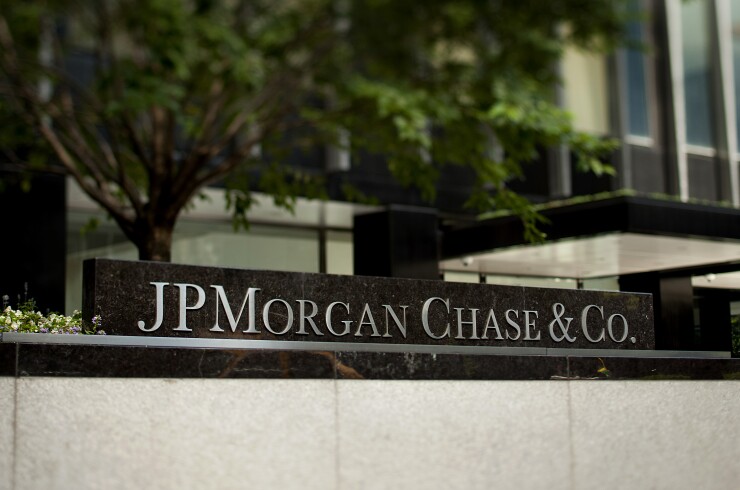
With
Amazon, for example, extends payments services to merchants using the e-commerce giant's platform to sell their wares via Amazon's Seller Wallet, which enables users to manage e-commerce funds through a single connection. Behind the scenes, these payments services are provided by J.P. Morgan Payments.
Amazon merely says "bank services providers" support its
Macy's Marketplace also uses J.P. Morgan Payments' embedded payments to send weekly payouts to third-party sellers in its marketplace launched in 2021. SalonCentric, L'Oreal's business-to-business marketplace, also relies on J.P. Morgan Payments' embedded banking and core treasury services in the background to process transactions and move funds between customers and vendors.
The bank's anonymity in these scenarios stems from a philosophy that marketplace platforms "want to be the ones providing a whole ecosystem — including banking — directly to their sellers," said Lia Cao, global head of embedded banking and solutions at J.P. Morgan Payments. Cao is one of American Banker's
Amazon is one of several marketplace platforms where J.P. Morgan Payments supplies embedded banking services to clients via APIs, embedded links, pop-up windows and widgets placed within platforms where merchants then connect, Cao said.
The white-label approach helps marketplaces deepen their relationships with sellers, she said.
"We've seen the rise in the last five years of multi-party online selling platforms like Amazon, eBay and Shopify, a phenomenon that's also spreading to social media. Increasingly, these platforms are bringing payments and related capabilities under their own brand so sellers never need to log out to access other services like a bank account," Cao said.
In addition to streamlining sellers' access to banking services within marketplace platforms, J.P. Morgan Payments' embedded-banking approach provides marketplaces with greater overall insight into its sellers' performance and behavior, Cao said. Insights help clients better understand their customers, while working with one banking provider helps to quickly diagnose any problems, she added.
Cao noted that in the past, banks lost some turf to fintechs and neobanks, which were quicker to adapt digital banking services to e-commerce platforms.
"Fintechs used the foundations of banking to help e-commerce firms manage payments, KYC onboarding, digital onboarding and other services, and we're delivering those services directly to platforms through embedded banking," Cao said.
JPMorgan Chase has longstanding public ties to Amazon; for more than two decades, it's been the issuer of
Marketplace platforms, along with independent software vendors, have led the adoption of embedded finance for the last several years, so it's no surprise that banks are awakening to opportunities to more directly serve sellers on large e-commerce platforms, said Brian Pike, a partner with McKinsey & Co.
Pike recently
Beyond DDA accounts and business analysis, J.P. Morgan Payments is developing capabilities to eventually add foreign-exchange funds management, lending and fraud controls, according to Cao.
J.P. Morgan Payments is currently testing the ability to offer loans to merchants via embedded banking in Canada, while in the U.S., the bank is working to extend embedded banking services to other industries, including health care and in-car commerce, Cao said.
JPMorgan Chase's
"Acquisitions and joint ventures are helping to accelerate our speed to market with embedded banking," Cao said, without detailing the bank's next strategic moves in other industries.
Large banks may be quicker to capitalize on embedded banking and finance, but there are also opportunities for smaller and regional banks to use the technology to expand their reach," McKinsey's Pike said.
"A smaller bank with geographical limitations that might have deep expertise in underwriting loans in a specialized industry or vertical can use embedded banking to extend those services to all parts of the country," he said.
McKinsey estimates that the broader arena of embedded finance could amount to a $20 billion market by extending links with nonfinancial firms' communications to directly launch payments, loans, insurance and other transactions.
"Until recently, embedded finance primarily served costly and riskier customer segments. But with nonbank insurgents gradually moving upmarket to target core banking segments, incumbents must choose how to respond or risk losing market share," McKinsey said in the white paper.





